What Is a Safety Audit and How Can Job Hazard Analysis Help?
Last Updated on October 12, 2023 / Health, Safety & Security

HR Question:
My manager is concerned about our company’s ability to pass a safety inspection and wants us to do an audit. Can you explain what a safety audit is and how to conduct one?
HR Answer:
A Safety Audit (known more formally as a Health and Safety Audit) is a routine, comprehensive review of the efficiency, effectiveness, and compliance of a company’s safety management programs. Although ensuring the safety and well-being of employees should always be a top priority, it is also critical to comply with local, state, and federal regulations.
For example, OSHA’s General Duty Clause requires that employers provide a work environment “free from recognized hazards that are causing or are likely to cause death or serious physical harm.” By conducting Safety Audits, the company is keeping a safety culture in the forefront of the business while doing its due diligence to increase the likelihood of complying with this clause.
What to Include in Safety Audits
A Safety Audit is similar to a comprehensive health check-up for an organization’s safety framework. The audit should include an in-depth review of safety protocols, recordkeeping, policies, procedures, and physical facilities. The main objective is to identify potential hazards, assess regulatory compliance, and recommend measures that improve and strengthen workplace safety.
It’s important to note that there isn’t a “one-size-fits-all” approach. Audits must be customized to the type of industry, size of the company or location being audited, applicable local, state, and federal laws, and any other company-specific factors that might affect the safety and health of your workforce.
How to Use Job Hazard Analysis in the Audit
Embedded within Safety Audits is the practice of conducting a Job Hazard Analysis (JHA). A JHA is an important component that dissects every job or task into steps, pinpointing potential hazards associated with each. You can leverage JHA to gain insights into the risks employees encounter during their daily responsibilities. This analysis forms the cornerstone of proactive risk management, facilitating the development of targeted training programs and safety initiatives tailored to address specific vulnerabilities.
The Advantages of Job Hazard Analysis:
- Informed Decision-Making: Armed with insights from JHA, the company can make data-driven decisions on resource allocation, training priorities, and safety measures thereby optimizing the impact of its initiatives.
- Tailored Training Programs: JHA results enable the company to design training programs that are finely tuned to address skill gaps and safety concerns, fostering a well-informed and competent workforce.
- Regulatory Adherence: JHA aligns with regulatory requirements that mandate hazard assessments, helping organizations increase their chances of being compliant.
- Employee Engagement: Involving employees in the JHA process cultivates a sense of ownership over safety, fostering engagement, camaraderie, and proactive participation in safety initiatives.
Turn Safety Audit Findings into Action
Once the Safety Audit findings and JHA insights are gathered, the company should take the following steps:
- Strategic Recommendations and Action Plan: Develop an action plan that translates audit and JHA insights into actionable recommendations. Assign responsibilities, set timelines, and establish priorities to support efficient implementation.
- Tailored Training Initiatives: Harness the power of JHA to craft training programs that align with identified skill gaps and safety needs. Equip employees with the knowledge and skills needed to navigate their roles safely.
- Continuous Monitoring and Adaptation: Regularly track the progress of the action plan and evaluate its impact on overall safety. Adapt strategies as needed in response to evolving risks and changing circumstances.
- Transparent Communication: Maintain open channels of communication with employees, fostering a culture of dialogue and receptiveness. Involving employees in safety initiatives empowers them and contributes to a safer workplace.
Safety Audits and Job Hazard Analysis are pivotal tools in cultivating an environment of trust, productivity, and well-being. By proactively addressing risks, strengthening and reinforcing safety measures, and nurturing a culture of safety first, the company not only strives to meet regulatory obligations but also underscores its commitment to employee welfare.
As industries evolve and challenges transform, the dedication to safety remains unwavering. Through regular audits, analyzing results, and responsive measures, the company can continue to pave the way for a safer work environment.
Thank you to Sherry Hume, SHRM-CP, HR Business Advisor for contributing to this HR Question of the Week.
Have you had a safety audit recently? Do you know which OSHA forms you are required to complete? Strategic HR has the expertise to develop/review your policies and practices to support the safety of your workers, customers, and visitors. Visit our Health, Safety & Security services to learn more about how we can assist you with workplace safety.








